David Parr: Artist's 'awe' at 1880s artisan decorated house
- Published
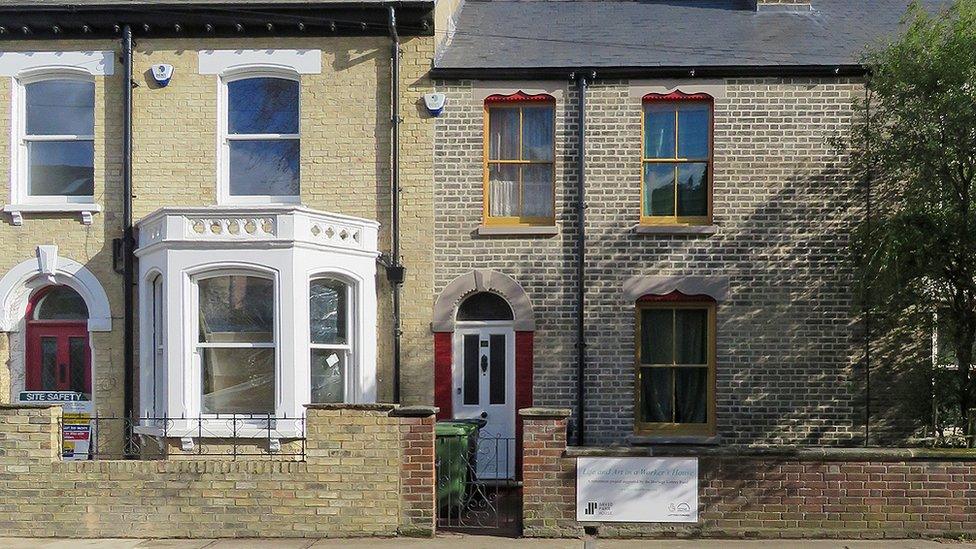
Outside it is an ordinary terraced house in what was once a working class district of Cambridge
An artist who helped restore a terraced home to how it looked more than 100 years ago said she was "deeply in awe" at the skills of a Victorian worker.
David Parr, who worked for a firm used by 19th Century master craftsmen, covered his Cambridge home with lavish patterns from the 1880s.
A charity was set up in 2014 to preserve the Gwydir Street house.
Saskia Huning reproduced some missing wall paintings ahead of its opening for public tours on 16 May.
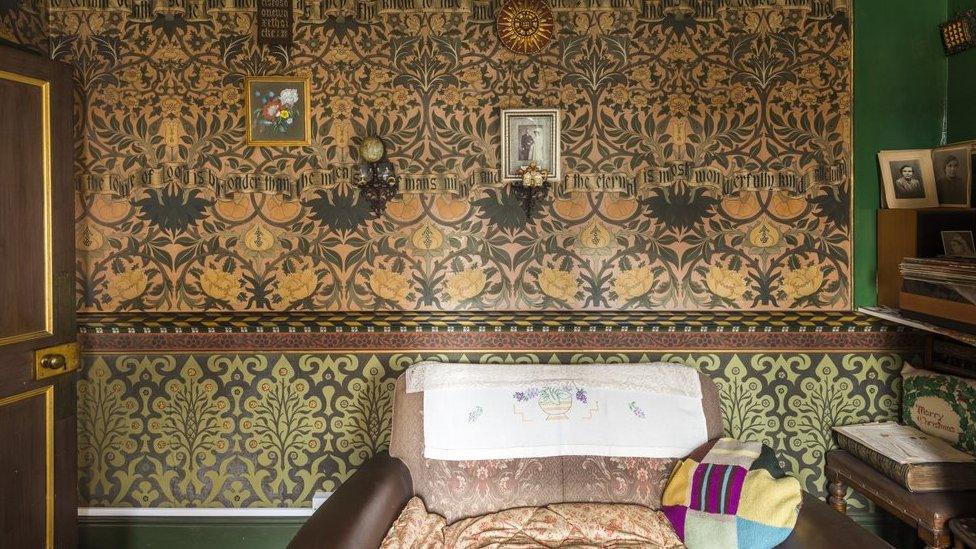
A charity was set up to preserve the house in 2014
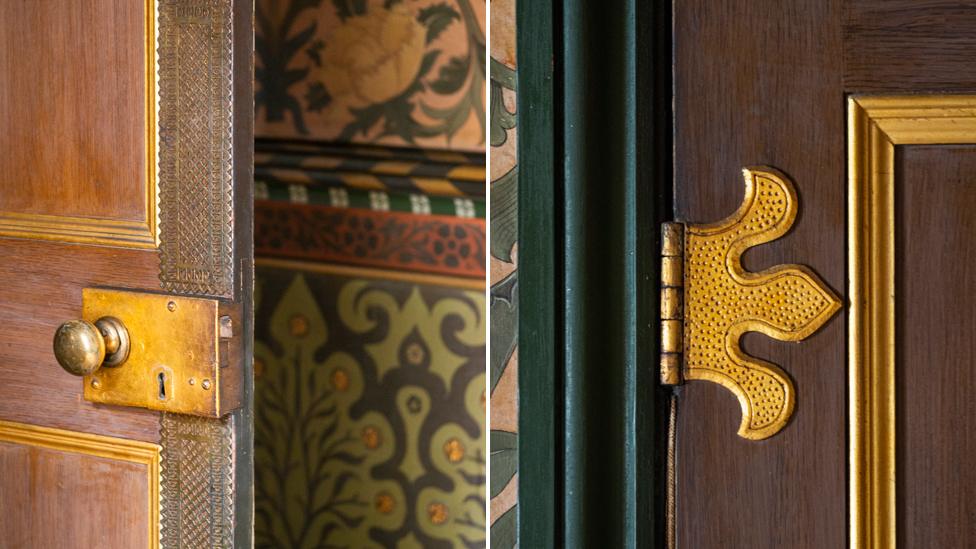
Inside the walls are covered in paintings and the doors are painted to mimic different wood grains
She said she soon realised Parr had "a really good head for design, as well as being a fantastic craftsman and artist".
"I was deeply in awe of the quality of his work," she said.
Parr worked for FR Leach & Son, a Cambridge company that worked with leading Victorian artists, including the Arts and Crafts founder William Morris.
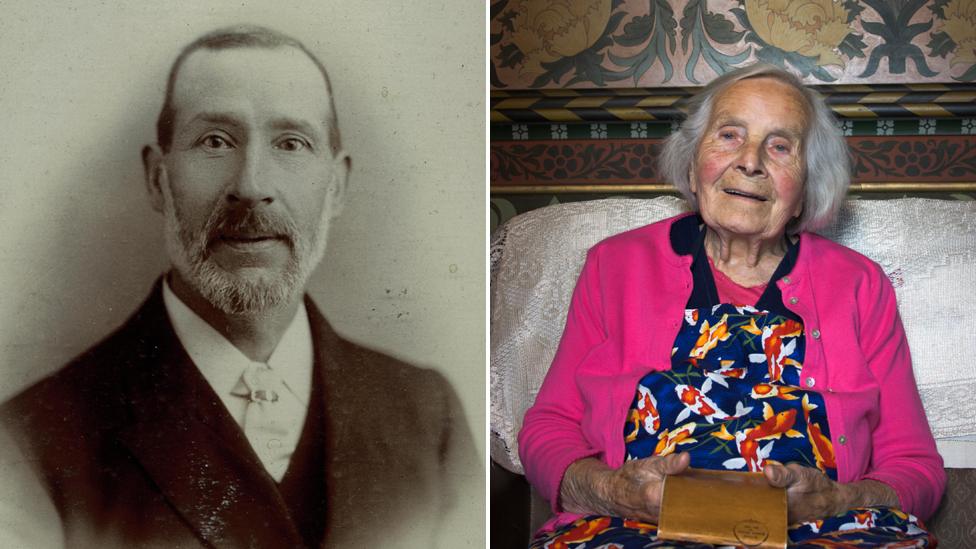
The interiors were painted by Parr before his death in the 1920s. His granddaughter Elsie Palmer lived in the house for the next 85 years
He used some of Morris's patterns in his home, as well as designing his own.
After his death in 1927, his granddaughter Elsie Palmer lived there for 85 years and left it largely unchanged.

The Arts and Crafts Movement
It began in the late 19th Century as a reaction to industrialisation and mass production
The movement took its name from the Arts and Crafts Exhibition Society, founded in 1887
Many of the people involved were influenced by the designer William Morris
He believed passionately in the importance of creating beautiful, well-made objects that could be used in everyday life

Tamsin Wimhurst discovered the house in 2009 and set up a charity to preserve it in 2014.
She was told "you have all the issues of a stately home but on a much smaller scale and that does not make it any easier".
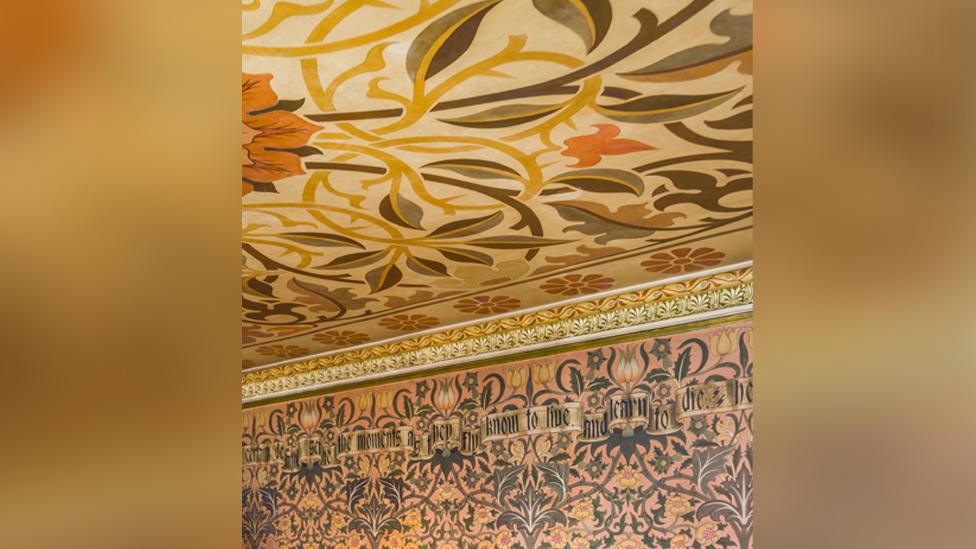
Even the ceilings are painted in the drawing room

Saskia Huning reproduced some missing wall paintings
The house was re-roofed, but damp continued to cause the wall decorations to deteriorate.
In 2016, the David Parr House was awarded more than £600,000 in Heritage Lottery Funding to conserve and stabilise the interior.
Ms Huning, who specialises in recreating and restoring historic painted decoration, worked in the hall, drawing room and dining room.
She said: "I found myself constantly surprised by Parr's incredibly fine work.
"He had a very flexible style and his work is incredibly consistent."

David Parr created his own design for his drawing room, but a section was missing so Saskia Huning was commissioned to recreate it
Parr worked in oil paints, which would have taken a long time to dry and can discolour over time.
Ms Huning used layers of acrylic paint to build up the colours.
She said it was a fabulous project to work on uncovering "a whole different world no one knew was there, with artisans beavering away in their own houses".
- Published26 November 2018
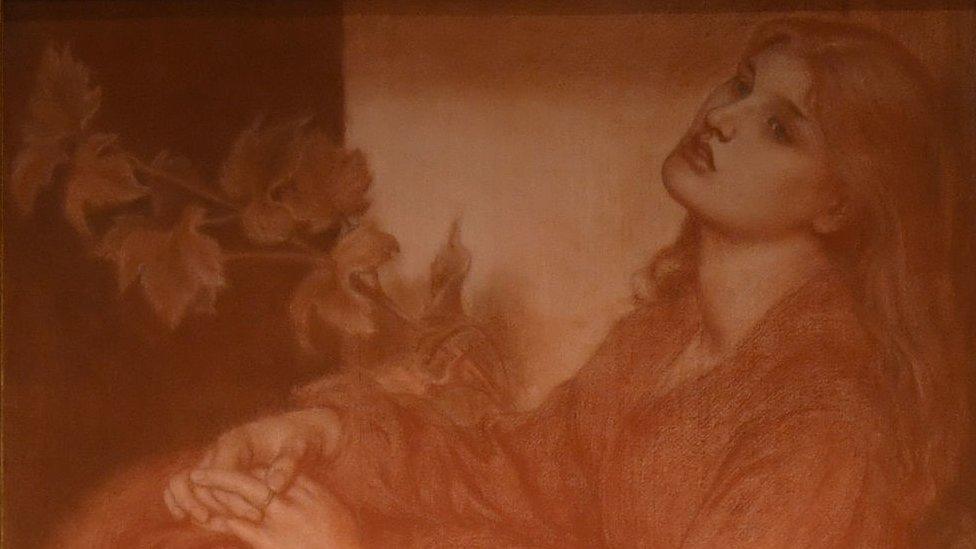
- Published4 March 2018
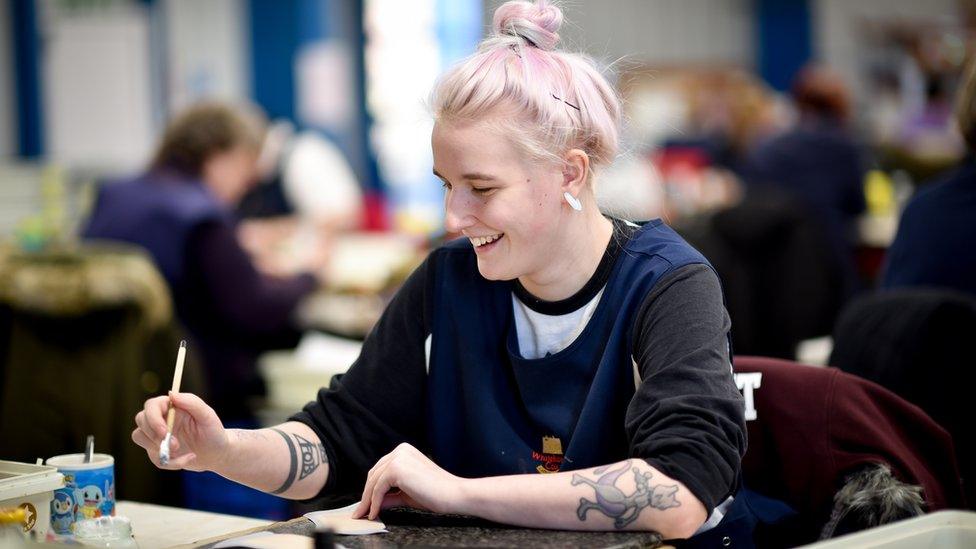
- Published19 September 2015
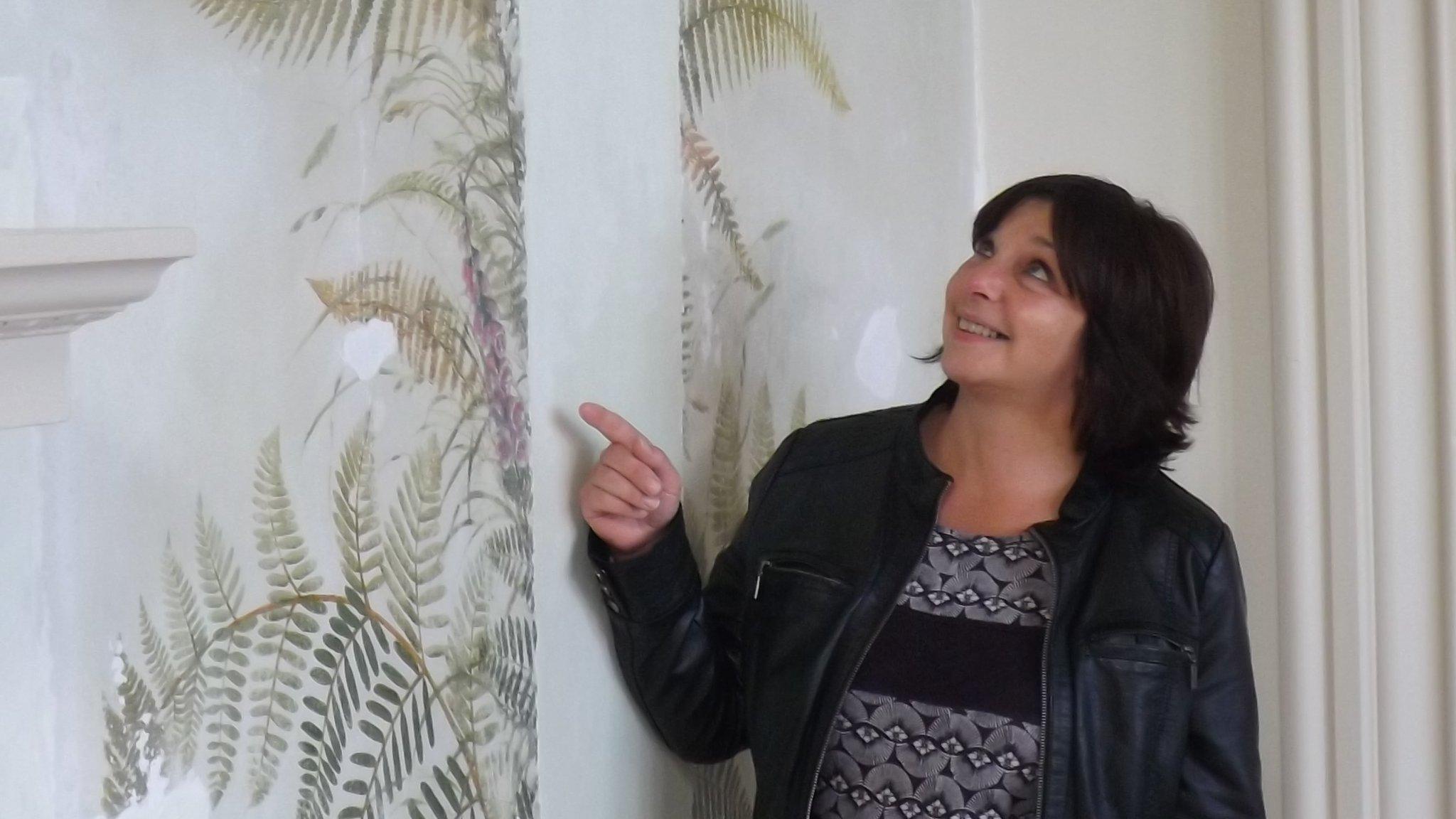
- Published20 August 2013
